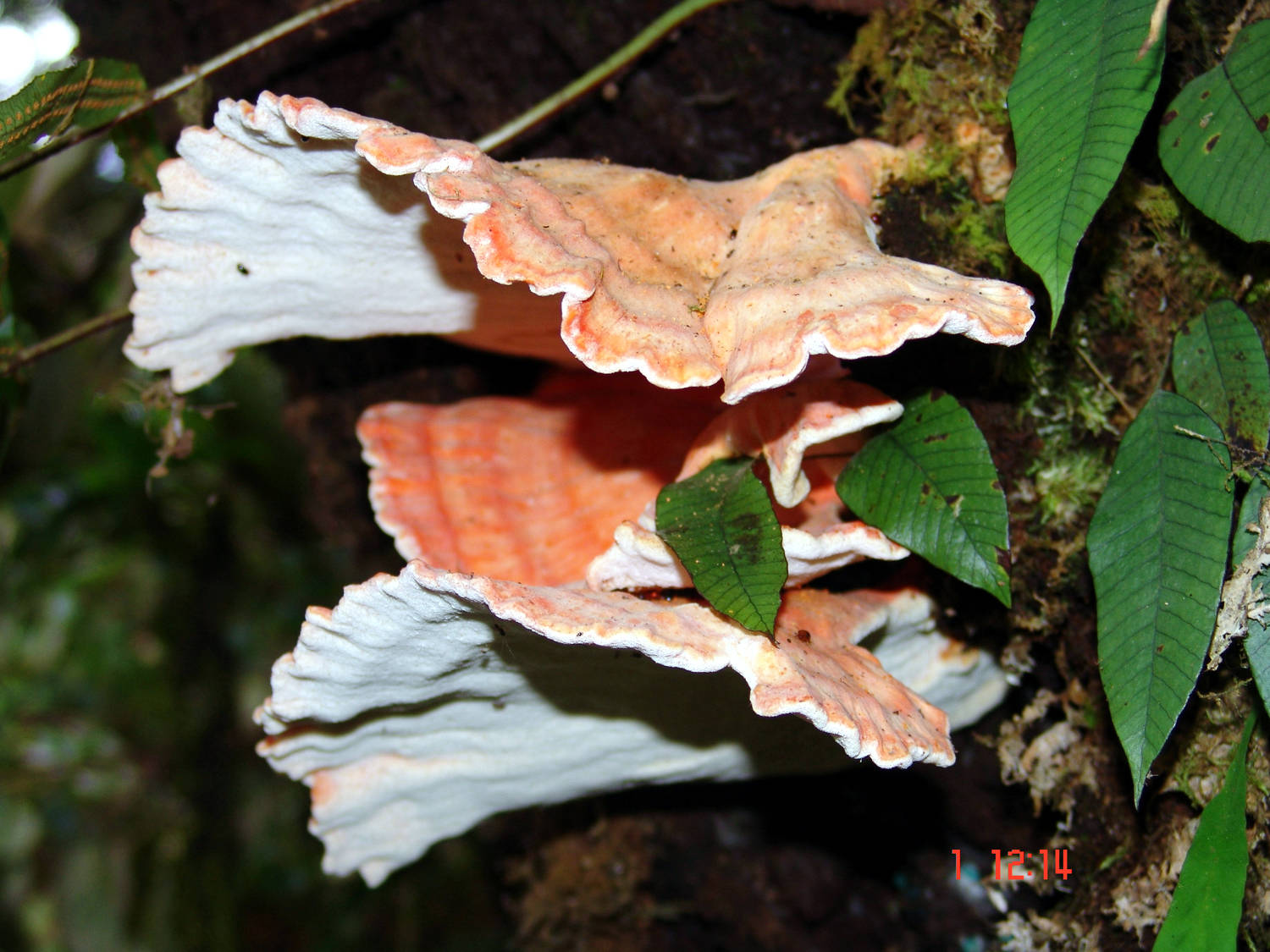
Local name: Taa Shamong
Edibility: Edible but needs to be cooked well.
Habitat:Sometimes solitary but more often in over lapping clusters on dead woods and on living trees as well. Sometimes growing as rosettes from roots of the tree and buried woods.
Description: Fruiting bodies: 12–38 cm across, fan-shaped or irregularly semi-circular, thick and fleshy, usually in large groups. Upper surface: Uneven, lumpy, and wrinkled, lemon-yellow or yellow-orange, margin obtuse. Hymenophore: Dirty white to grey colour with tiny pores. Flesh: White. Spore Print: White.
Comments: There is another type of this fungus which has a white pore surface, and some authors recognize this as Laetiporus sulphureus var. semialbinus syn. Laetiporus cincinnatus but both are edible when well cooked. Laetiporus sulphureus has yellow pores in contrast to Laetiporus cincinnatus.


